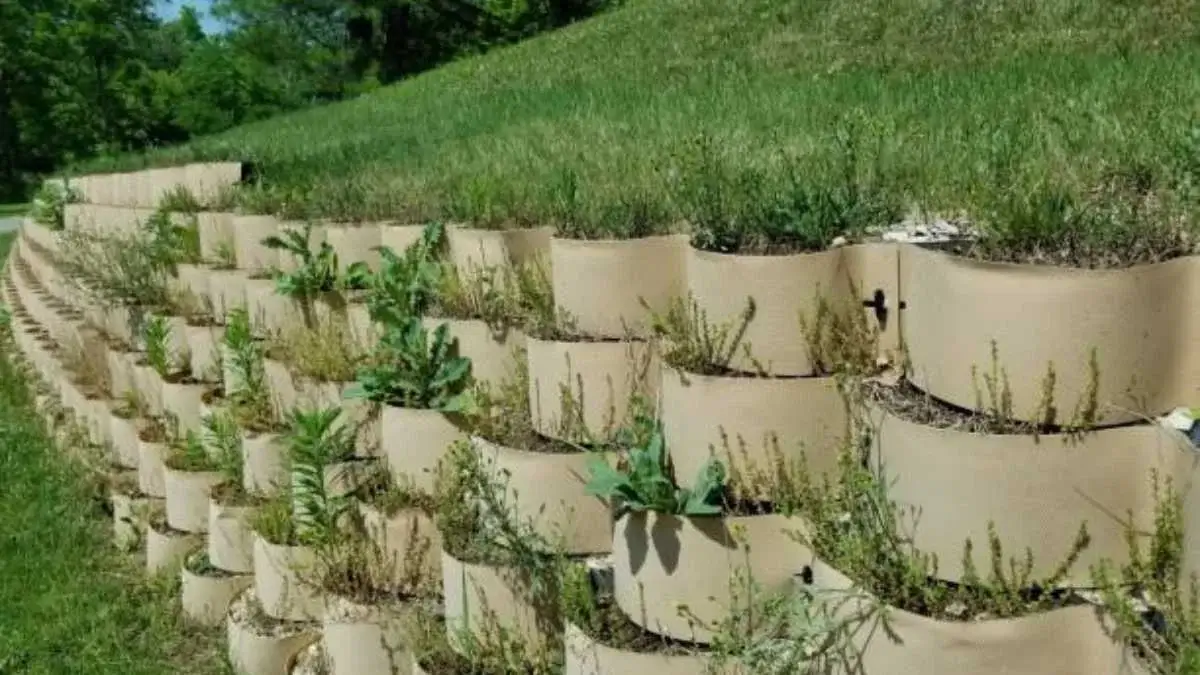HOME IMPROVEMENT
Innovative Retaining Wall Solutions for Erosion Control and Landscape Design

Introduction
Erosion can do more than just damage land—it can reshape an entire property if left unmanaged. Whether you’re dealing with sloped terrain, shoreline exposure, or runoff-prone areas, addressing soil displacement is essential for long-term property health. One of the most versatile and effective tools for erosion mitigation is the retaining wall.
Beyond their functional role in preventing soil movement, retaining walls can enhance a property’s appearance, creating structure, texture, and flow within a landscape. Today’s retaining wall solutions go far beyond traditional stone stacks, integrating engineering precision with aesthetic versatility.
Mountain Stone understands the importance of combining form and function when tackling erosion through landscape design. This guide explores modern retaining wall solutions that not only prevent land degradation but also improve usability and curb appeal.
Table of Contents
Understanding the Purpose of Retaining Walls
Soil Stabilization and Structural Integrity
At their core, retaining walls are engineered barriers that hold soil in place. They’re especially critical in sloped or terraced terrain, where water runoff or gravity can shift large amounts of earth. Without these stabilizing structures, erosion can undermine foundations, flood lower elevations, or lead to landslides in extreme cases.
Properly constructed retaining walls redirect water flow and reinforce the ground behind them. This makes them an ideal solution for homeowners or developers needing reliable, long-term erosion control.
Defining Spaces Within a Property
Aside from controlling soil movement, retaining walls are useful for delineating functional spaces. They can create flat terraces for gardens, patios, or walkways on previously unusable slopes. Walls can also act as raised planting beds, visual dividers, or boundary features within a landscape.
Strategically placed retaining walls help maximize the usable square footage of a property without compromising its natural features.
Modern Materials for Retaining Wall Construction
Natural Stone and Boulders
One of the most classic options, natural stone offers a timeless aesthetic that blends seamlessly with the environment. Stones can be dry-stacked or mortared, and when installed correctly, they provide both visual appeal and significant erosion resistance.
Natural stone works especially well for shoreline erosion control or rustic landscape themes, aligning with environmentally conscious design preferences.
Concrete Segmental Retaining Wall Blocks
Segmental retaining wall (SRW) blocks are precast units that lock together without the need for mortar. These systems are known for their strength and flexibility in design. They come in a wide variety of textures, shapes, and colors, allowing for full customization.
SRWs are often used for both small-scale garden walls and larger structural barriers, offering a cost-effective and durable solution for most residential and commercial applications.
Reinforced Earth Walls and Geogrid Systems
For sites requiring significant load-bearing support, modern retaining wall construction may include soil reinforcement technologies such as geogrids. These synthetic mesh materials are layered between soil and block courses, effectively tying the wall into the hillside behind it.
This approach enhances stability, especially in high-elevation or high-saturation environments, and is commonly used by professional retaining wall contractors for long-term performance.
Key Design Considerations
Drainage and Water Management
One of the most overlooked aspects of retaining wall construction is drainage. Without proper water flow management, hydrostatic pressure can build up behind the wall, leading to structural failure.
French drains, weep holes, and gravel backfill are essential components that should be integrated into any retaining wall system. These elements reduce pressure and ensure the wall can withstand both water and weight over time.
Wall Height and Local Building Codes
The height of a retaining wall significantly affects its design, reinforcement, and permitting requirements. Many jurisdictions require engineering approval and permits for walls over four feet tall.
Understanding local codes before beginning construction is crucial. Hiring an experienced erosion control contractor can ensure your retaining wall meets both aesthetic goals and structural safety standards.
Integrating Walls into Landscape Design
Function Meets Aesthetics
Retaining walls no longer need to look like utilitarian barriers. With the wide variety of materials and design techniques available, they can blend with outdoor furniture, hardscape features, and even lighting systems.
Walls can be designed with curves, tiers, and capstones to complement the overall landscape layout. In many cases, these design elements increase property value while serving essential structural purposes.
Multi-Level Terracing for Usability
For sloped properties, using retaining walls to create terraced levels transforms difficult terrain into functional outdoor space. Each level can serve a different purpose—gardens on one tier, a fire pit on another, and a seating area above.
This structured approach reduces erosion and creates dynamic, interactive zones within a landscape, especially useful for properties that border water or experience significant rainfall.
Retaining Walls and Shoreline Erosion Control
Waterfront-Specific Design Needs
Shoreline properties face unique erosion challenges. Wave action, fluctuating water levels, and storm surges can deteriorate soil rapidly. In these cases, retaining walls built with riprap foundations or reinforced boulders help absorb wave energy and keep the bank intact.
Wall designs near water must also account for drainage, ice pressure (in colder climates), and water-permeable materials. When combined with vegetation and natural buffers, retaining walls provide a powerful, layered shoreline erosion control solution.
Sustainable Solutions for Sensitive Environments
For ecologically sensitive areas, retaining walls can be built using bioengineering methods. This may include vegetated walls that integrate live plants into the structure or walls that use biodegradable geotextiles to stabilize the base.
These designs support both soil integrity and habitat development, aligning with modern environmental standards and long-term conservation goals.
When to Work with a Professional Retaining Wall Contractor
Engineering and Technical Precision
Building a retaining wall—especially one that handles significant loads or water pressure—requires more than DIY knowledge. Professionals understand soil mechanics, hydrology, and proper reinforcement techniques.
Engaging a retaining wall contractor early in the project helps avoid costly revisions, failed walls, or safety issues.
Custom Planning and Local Expertise
Local expertise matters. Soil composition, slope grade, and weather patterns vary widely by region. An experienced contractor will evaluate your site and recommend the most suitable materials and methods.
Mountain Stone works closely with clients to design and build retaining wall systems that meet both visual and structural requirements. With detailed planning and execution, a retaining wall becomes more than a barrier—it becomes a lasting feature of the landscape.
Conclusion
Retaining walls are more than functional fixtures—they’re essential tools for erosion control, land stabilization, and creative landscape design. Whether used to define space, prevent runoff, or protect shoreline property, a well-designed retaining wall delivers both strength and style.
By combining modern materials, proper drainage techniques, and tailored engineering, property owners can protect their investment while elevating the look and usability of their land.
For those exploring erosion control options, Mountain Stone offers professional guidance and construction for retaining wall systems that perform under pressure and enhance outdoor spaces. With thoughtful planning and expert execution, retaining walls become a cornerstone of both protection and design.
-

 GENERAL2 months ago
GENERAL2 months agoUncovering the World of кинокрадко: The Dark Side of Film Piracy
-

 GENERAL1 month ago
GENERAL1 month agoUnveiling the Art of преводсч: How Translators Bridge Language Barriers
-

 YOGA1 year ago
YOGA1 year ago4 Person Yoga Poses for Beginners
-

 GENERAL2 months ago
GENERAL2 months agoThe Journey of iamnobody89757: From Anonymous User to Internet Sensation


























